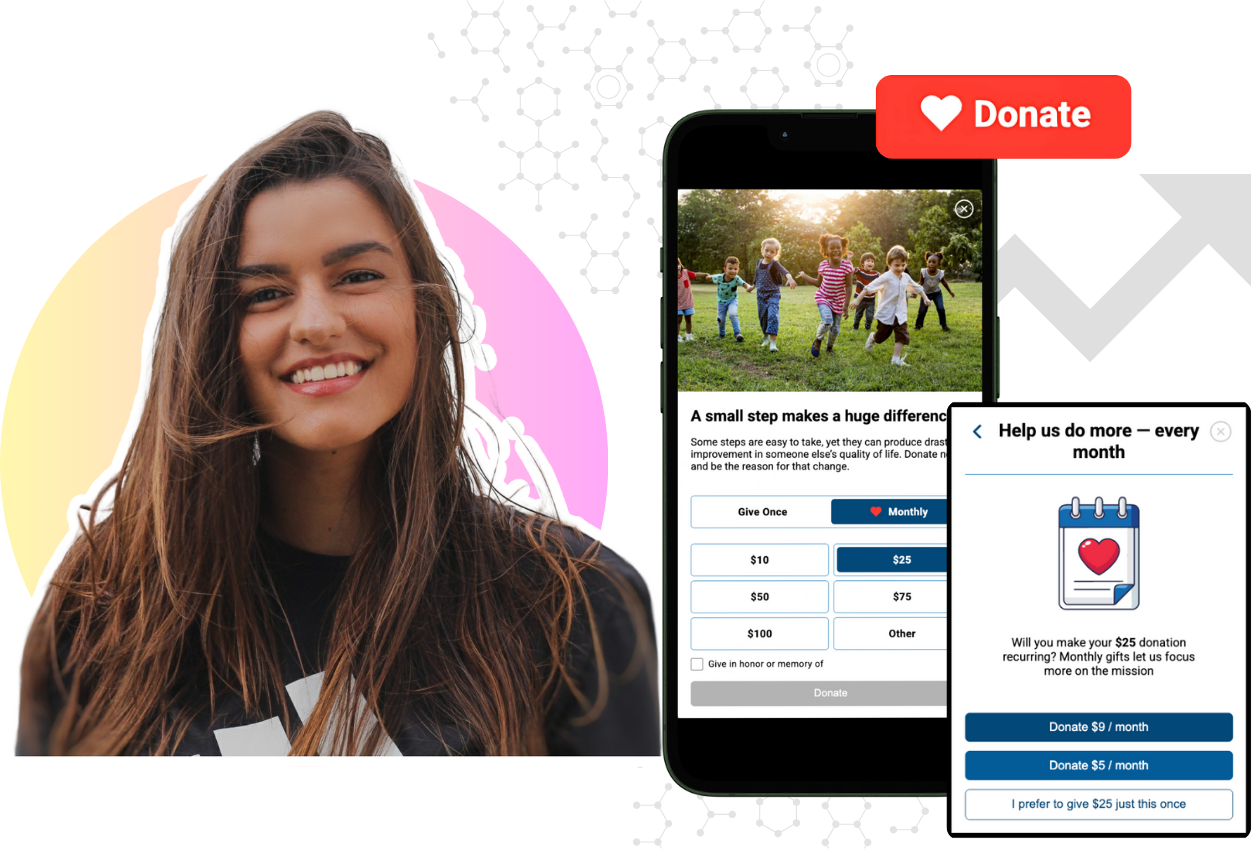Your Guide to Social Media Fundraising for Nonprofits
Social media for nonprofits is a vital part of any fundraising strategy. It’s not only a great way to spread awareness about your cause, but also...

Mobile-First Pop-Up Donation Form
Launch mobile-first pop-up forms in minutes, use built-in tools to capture more donations, and optimize the giving experience—no dev team required.
New to online donation pages for your nonprofit? Start here.
Donation page A/B testing - no science degree needed.
Keep your donation page loading fast - and drive higher conversions.

The 4 Types of Online Donation Experiences
89% of donors leave without giving. Learn how to use the right donation form to close the gap and boost conversions.

The demand for funding resources will continue to grow the larger your nonprofit gets. As it does, finding additional streams of funding beyond your current donation amounts might be key to match what you wish to achieve.
As we previously discussed, financial sustainability for nonprofits is just as important, if not more so, as any other business environment. Even if you have a strong funding stream, relying on it to remain the same year over year may set you back. Expanding your donation sources to ones beyond individual donations are an important step in achieving strong financial sustainability.
One such source are grants. Grants for nonprofits come in a variety of types and amounts, each one being designed to give your nonprofit an opportunity to expand your reach and vision. Applying for and ultimately receiving a grant may take some time, but the ultimate reward will be one that can change the course of your nonprofit.
In extremely simple terms, a nonprofit grant is a financial donation from a foundation (government, corporate, or private) in which the nonprofit does not have to pay it back.
Of course, receiving a donation in this case isn’t as simple as just asking for one. These foundations want their donations to be used for the greater good, and many will only give to nonprofits they deem to need it the most. The acceptance rate for grant proposals is low – just 1 in 10 applications are approved, and only up to 30% receive a favorable response.1
Even with the low rate of acceptance, the amount of grants being given each year is growing. Giving by foundations has grown in nine of the last 10 years. In 2020, the total dollar amount grew by 17%, totaling over $88 billion, the highest amount ever.2
The benefits of receiving a grant is two-fold. The first is an additional stream of funding, and the other is increased visibility and credibility.
Many grant-making foundations will stipulate as part of the grant that you use the funds for a specific purpose rather than just general operating expenses. Even so, the main purpose for requesting a grant is to apply the funds directly to a program or larger capital project that a normal donation stream can’t fully fund. A grant of this magnitude will not only give your nonprofit a needed jolt of funding, but will allow you to clearly mark a path toward what you envision for your organization.
The competition for a grant – especially for one at the federal level – is high. Because of that, obtaining one grant can open doors for other grants down the road. Grant makers want to see the successes of your organization and they want to believe in the work you are doing in your community. When one foundation believes in your work, others will see it as well along with the change you are making in your community. Your visibility and credibility will continue to rise, making it easier to apply for other grants in the future.
The biggest step to take in your application for a grant is a grant proposal. The application will also include various requirements and documents to include, but the proposal itself will be the most important part.
This piece of writing shouldn’t just be a one-page paper with vague reasons that states why you need the money. The grant maker is looking for a story. They want to know the background of your organization. They want to hear the impact of your work. And most of all, they want to know why this particular grant fits with your mission and why they should be a part of it.
This includes stats, facts, and even a budgetary outlook that point to an area of need and how the money will help. The more you answer the “why” of your proposal, the stronger your application will be.
Writing a grant will take some time. A lot of research about the foundation you are writing to, and even your own organization needs to be done before and during the writing process. It can be written either by someone in-house, or by a professional grant writer. Either way, the proposal needs to be broad and eloquently presented in order to be strongly considered. Once submitted, it is simply a waiting game to hear whether your proposal has been accepted or not.
An advantage of going through the process of a grant proposal is that even if yours isn’t accepted, it can still be used as an opportunity to better your submission for next time, and to also continue with the future planning of your nonprofit. A grant is a chance for you to greatly change the course of your nonprofit, and submitting one may be, at worst, a chance to see what it truly takes to be accepted.
1 6 Reasons You Shouldn't Ask For A Grant Writer's Success Rate

Social media for nonprofits is a vital part of any fundraising strategy. It’s not only a great way to spread awareness about your cause, but also...

If you can believe it, we’re already more than halfway through the year. Summer is nearing its end, school is starting up again, and before you know...

1 min read
2021 has flown by, and we are already in the month of November. Not only is this the busiest time of year for travel, family gatherings, and...